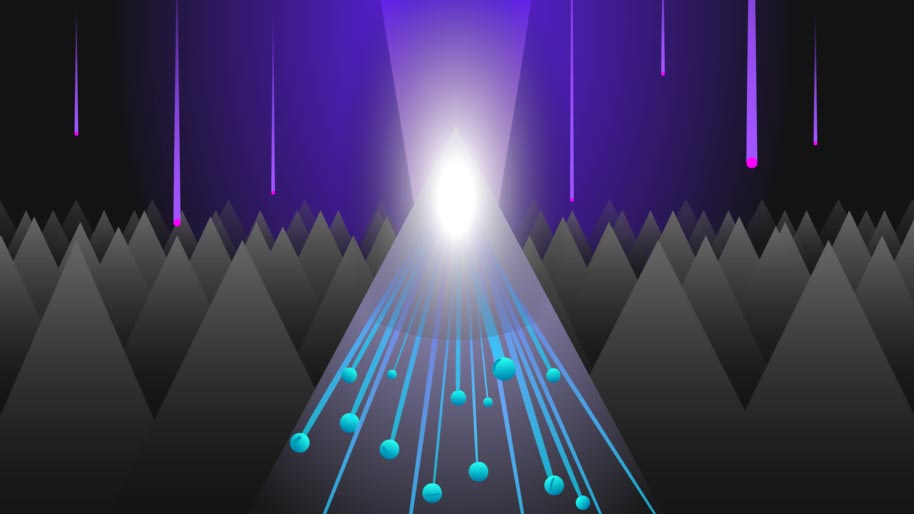UV light triggers the multiplication of electrons in nanostructures. Photo credit: Wisa Förbom
The efficiency was so high that the researchers initially found it difficult to believe in the result. Now Aalto University’s spin-off company ElFys Inc. is already supplying record detectors for various industries.
Researchers at Aalto University have developed a black silicon photodetector that has achieved an efficiency of over 130%. This is the first time that a single photovoltaic device has exceeded the 100% external quantum efficiency limit for UV. This result opens up new opportunities to improve efficiency beyond the famous Shockley-Queisser limit.
“When we saw the results, we could hardly believe our eyes. We wanted to check the results immediately using independent measurements, ”says Prof. Hele Savin, head of the electron physics research group at Aalto University.
The independent measurements were carried out by the Physikalisch-Technische Bundesanstalt (PTB), which is known to provide the most accurate and reliable measurement services in Europe.
Dr. Lutz Werner, Head of the PTB Laboratory for Detector Radiometry, comments: “After seeing the results, I immediately realized that this is a major breakthrough – and at the same time a very welcome step forward for us metrologists who dream of higher sensitivities. ”
The secret behind the breakthrough: Unique nanostructures
The external quantum efficiency of a device is 100% when an incident photon generates an electron for the external circuit. An efficiency of 130% means that an incident photon generates approximately 1.3 electrons.
The researchers found that the origin of the exceptionally high external quantum efficiency lies in the charge carrier multiplication process in silicon nanostructures, which is triggered by high-energy photons. The phenomenon has not been observed earlier in actual devices because the presence of electrical and optical losses has reduced the number of electrons collected.
“We can collect all multiplied charge carriers without the need for a separate external bias, since our nanostructured device is free of recombination and reflection losses,” explains Prof. Savin.
In practice, the recording efficiency means that the performance of any device using light detection can be drastically improved. Light detection is already widespread in our everyday lives, for example in cars, mobile phones, smartwatches and medical devices.
“Our detectors are currently becoming more attractive, especially in biotechnology and the monitoring of industrial processes,” says Dr. Mikko Juntunen, CEO of Aalto University spin-off Elfys Inc. You are already making the record detectors for commercial use.
The results, which led to the recording efficiency, were accepted for publication in US Pat Physical Examination Letters entitled “Black Silicon Ultraviolet Photodiodes Achieve External Quantum Efficiency Over 130%.”
Reference: “Black silicon ultraviolet photodiodes achieve an external quantum efficiency of over 130%” by M. Garin, J. Heinonen, L. Werner, TP Pasanen, V. Vähänissi, A. Haarahiltunen, MA Juntunen and H. Savin, September 8, 2020, Physical Examination Letters.
DOI: 10.1103 / PhysRevLett.125.117702



